By Gamefreak75 (talk)
Intro
Hello readers! First off, let me congratulate the Shroom staff on this wonderful issue. Issue LXXV is a large milestone for the Shroom because it is only a quarter away from the 100th issue and it's dedicated to me. Anyways, you probably don't want to hear me babbling about the 'Shroom and its achievement or other useless drivel, but rather to read what goes on in the deepest part of my mind. Well too bad, this is a video-game related article. To be more specific, this article is about the Mario and Kirby series.
Now let me give you some background information on what this article you're about to be reading for the next 30 minutes is about. For a while, this thought about a Kirby vs. Mario scenario has been brewing in my mind for the longest time, and by that I mean the past two months. At the core, both of these are two of the most recognized platformers in today’s video-game market. Both are radically different, yet their concepts remain the same. I’ve seen people on the forum, myself included, comparing the Kirby series to Mario and vice versa. I originally planned to just make this a thread on the forums, but I thought it would be better to just write it down here. Essentially, this “review” is a comparison of both series and I will be delving into different categories, from gameplay to music to extra content. This “review”, however, is more of an opinionated mess as you may soon find out. I will try to be unbiased as possible in this opinion piece…maybe…
I will be picking apart the four most recent, non-spin-off, non-compilation (Kirby's Dream Collection), 2/2.5-D platforming main games from the series.
For Mario, the four games are:
Super Mario 3D Land is not there because it is a 3D platformer. Super Mario Galaxy 2 is not there because even though it was released after NSMBW, it is a 3-D platformer, not a 2.5-D platformer, although it damn feels like one half the time.
For the Kirby series, the four most recent games, all of which happen to be platformers are:
Before anyone says anything, Kirby Super Star Ultra is not a compilation of different Kirby games, but rather a remake. For Kirby Super Star Ultra, I will be focusing on the four non-unlockable sub-games that are relevant to this article (Spring Breeze, Dyna Blade, Revenge of the Meta Knight, and Milky Way Wishes).
PLEASE NOTE: I like both series and I will try to be as professional as possible. For the third time, this is NOT a review.
Now, I should begin before you guys find something more productive to do with your time!
Story
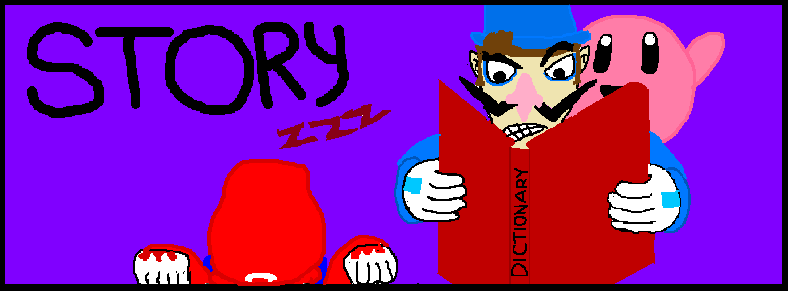
The first concept I will be covering is the story. Anyone who is a fan of these games should already know that both of these series are not exactly the best when it comes to plot. However, that doesn't necessarily mean that they're bad games; they just have a bare-bones story. I will proceed to state the plots of the eight games I had previously mentioned. I won't go into too much detail, because frankly some of these are self-explanatory. I'm only going to be stating the bare minimum of the plot, including plot twists and other elements that affect the game, so bear with me.
- New Super Mario Bros. – Peach gets kidnapped by Bowser Jr. while Mario is busy at the castle. Mario has to go save Peach from Bowser.
- New Super Mario Bros. Wii – The Koopalings kidnap Peach by tossing a giant cake on her;
she is taken to Bowser's castle. Mario, Luigi, and two Toads have to go save Princess Peach.
- New Super Mario Bros. 2 – Mario and Luigi are busy goofing off and collecting coins in their Raccoon forms. The Koopalings come and ruin their fun, kidnapping Peach in the process. Mario and Luigi go forth to rescue Peach.
- New Super Mario Bros. U – Mario, Luigi, and the two Toads are enjoying a nice meal when Bowser crashes their party. Instead of kidnapping Peach, he has a giant claw grab the four protagonists and throws them across the kingdom. Bowser takes Peach hostage in her castle and the four heroes set forth to save her.
As you can see, the plotline for all these games boil down to “Mario has to go save Peach because Bowser keeps kidnapping her.” No plot twists, no game changers, no anything. Nothing remarkable, eh? Let's see the plots for the Kirby games now.
- Kirby Super Ultra
- Spring Breeze – King Dedede has stolen all the food from Dream Land and Kirby has to go get it back.
- Dyna Blade – Dyna Blade is causing havoc in Dream Land and Kirby has to put a stop to it.
- Revenge of the Meta Knight – Meta Knight plans to conquer Dream Land using his Battleship Halberd. Kirby has to prevent this from happening while taking out the Halberd in the process.
- Milky Way Wishes – The sun and moon are fighting and a jolly fellow named Marx asks Kirby to summon NOVA to put a stop to this madness. At the end, it turns out Marx uses Kirby so he could conquer Dream Land for himself. Kirby defeats Marx and sends him on a collision course towards NOVA. NOVA is destroyed and Marx is killed in the explosion.
- Kirby's Epic Yarn – Kirby is walking by one day when he spots a magic tomato. He eats the tomato, which turns out to be snack of the dreaded sorcerer Yin-Yarn. Yin-Yarn sucks Kirby into his magic sock, sending him into an alternate dimension called Patch Land. Kirby is turned into yarn outline of himself and loses the ability to float or inhale. He saves Prince Fluff, whom tells Kirby that Yin-Yarn has destroyed his kingdom. During this time, Yin-Yarn starts turning Dream Land into a land made of yarn and fabric and even transports some of its residents into his magic sock.
- Kirby Mass Attack – Kirby is relaxing somewhere when suddenly Necrodeus appears. Necrodeus splits Kirby into ten smaller Kirbies and kills them off one by one. Before he could kill the last one, it manages to escape using the original Kirby's life force. Kirby has to go defeat Necrodeus in order to become one again.
- Kirby's Return to Dream Land – Kirby and his friends (Dedede, Meta Knight, and Waddle Dee) are goofing off when a wormhole appears in the middle of the sky and spits out a ship. The ship crashes and Kirby and the gang go to see what the commotion is. Inside the ship is an alien named Magolor, who is distraught because he lost the parts to his ship. Kirby agrees to help Magolor find his ship parts.
After retrieving the ship parts, Magolor takes Kirby to his homeworld, Halcandra, where they are attacked by a dragon wearing a peculiar crown. Magolor asks Kirby if he can defeat the dragon, Landia, so he could be able to fly his ship safely. Kirby agrees to do so.
After defeating Landia, the crown falls off and lands in front of the gang. Magolor drifts from the sky, takes the crown, and puts it on his head, transforming him into a monster. Magolor reveals that he used Kirby and his friends all along so that he could take over the galaxy, starting with Kirby's Planet Pop Star.
The plots of the Kirby games may not be great, but they certainly trump those of the aforementioned Mario games. They're not all about the same tired concept, although you could argue that Kirby definitely has save Dream Land about as many times as Mario has to save Peach.
Gameplay
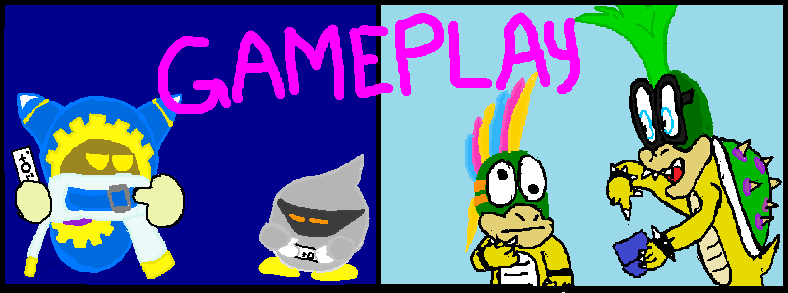
Now we get into the heart of it all. Gameplay is king when it comes to video-games, as the name would imply. Your video-game can have the greatest story told to man, or it can have the music composed by Beethoven himself, but if the gameplay makes me want to break the game to pieces, you’ve got a problem.
For those of you who played the four Mario games I mentioned, you should already know that the gameplay between the three is hardly different. There’s the added multiplayer in NSMBW and NSMBU and the Boost Mode in NSMBU, but aside from that, it’s pretty much alike. The core of the gameplay in the side-scrolling Mario games is running and jumping. Most enemies can be defeated by a jump. Nearly every boss takes three hits to be defeated. Another key gameplay element in the series is the addition of power-ups, most of which make recurring appearances. The Super Mushroom, Fire Flower, and Mini Mushroom appear in every game on the list. The four games each have/introduce their own unique set of power-ups, however.
- New Super Mario Bros. had the Blue Shell, which was honestly one of my favorite power-ups in the series. The Mega Mushroom also made its return here, although it was only available in about four or five levels.
- New Super Mario Bros. Wii introduced the Ice Flower, Penguin Suit, and the Propeller Mushroom. The Ice Flower has since been a staple in the other games, but the Penguin Suit and Propeller Mushroom only appear in NSMBU after the game has practically been beaten. Yoshis also appear in this game.
- New Super Mario Bros. 2 saw the return of the Raccoon Suit as well as the introduction of the Gold Flower, which was practically useless as you lose it at the end of the level.
- New Super Mario Bros U’s only new power-up was the Squirrel Suit, which was definitely the key power-up for a lot of the levels.
In general, the New Super Mario Bros. games play it safe by staying true to the original games. All characters play the same, jump the same, with no drawbacks (i.e. Luigi’s lack of traction). There are not any drastic changes to shake up the game.
However, the latest Kirby games display three different styles of gameplay.
- In Kirby Super Star Ultra and Kirby's Return to Dream Land, original Kirby gameplay is at its core. The player can inhale enemies to gain their powers and unlike the Mario games, it is possible to do more than one attack with a majority of the abilities. For example, Fire Mario can only throw two fireballs at a time or perform a Spin Jump to throw a fireball in the left and right directions. However, Fire Kirby can breathe fire which can be controlled using the D-pad, engulf himself in flames, perform an aerial fire attack, use a dashing fireball attack, and even slightly climb up the walls using a fire spin. It always feels so satisfying to destroy a Kirby boss with a different ability if possible unlike the Mario series where all you can do is stomp them or kill them with fire. A special type of ability, called a Super Ability, was also introduced in Return to Dream Land and added some key gameplay features because of this. I'll get more in detail with the bosses later on.
- Kirby's Epic Yarn, to many people's “dismay”, was shown to have taken away Kirby's ability to inhale enemies. Instead, he has a whip that he can use to pull on objects and roll up enemies and projectiles into yarn balls that can be thrown. However, this doesn't mean Kirby has lost any of his transformations. Kirby can turn into a car by dashing, a parachute by floating, a weight by performing a ground pound, and a submarine by automatically entering a body of water. Aside from the basic power-ups, items called Metamortexes can turn Kirby into various different forms as well, such as the Tankbot, the Saucer, and Fire Truck among a few others. Trying to take down the bosses is more strategic as well as you must stun them and attack their weak point rather than wailing on them using one of many abilities.
- Kirby Mass Attack also introduced another unique play style to the Kirby series. Once again, Kirby cannot inhale enemies, but instead, he is split into ten smaller Kirbies. Although the player usually starts with one Kirby, they can amass more by collecting fruit found throughout the levels. One hundred points of fruit gives the player a Kirby. Many Kirbies are needed because there are certain switches and items that can only be passed or destroyed by having a certain amount of Kirbies or more. To attack, the player can tap an enemy to make the Kirbies swarm them or throw Kirbies one at a time at them in a similar fashion to Olimar throwing his Pikmin. Many enemies and bosses in this game can only be defeated in certain ways, so this game is a lot more strategy oriented than most of the previous installments as well.
I don't think it's hard to see which series offers the wider array of gameplay styles and elements. The Kirby series is always trying new things while the New Super Mario Bros. series is stagnant. That doesn't necessarily mean it's bad, mind you, as it is all a matter of taste anyways.
Level Design
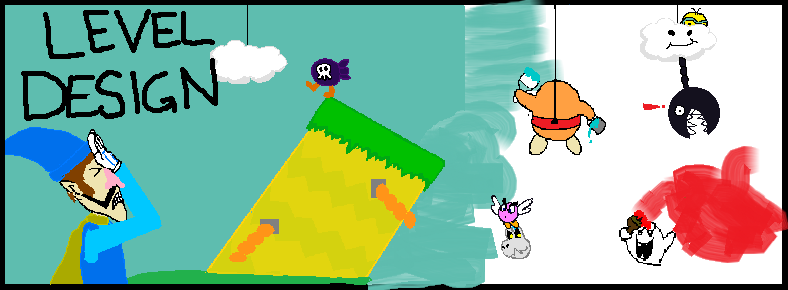
For level design, I'm going to be focusing on the theme of the worlds included in the game as well as the overall general layout.
- New Super Mario Bros. had the basic themes in the following order: Plains, Desert, Beach, Forest, Snow, Mountains, Sky, and Lava. The level design in general was pretty bland, but for the rebirth of the platformer Mario games, it was decent.
- New Super Mario Bros Wii had the exact same themes, except the forest was now the fifth world, Ice was the third world, and the Beach was the fourth world. The levels were more fleshed out compared to the previous game.
- New Super Mario Bros. 2 was basically a shameless copy of the Wii version. It literally looked like the models had been ripped from the Wii version and placed in that game. Same themes as the past two as well.
- New Super Mario Bros U. did improve with the backgrounds, especially the Ghost House levels. However, once again, it used the same blasted themes as the previous three games.
Kirby series:
- Kirby Super Star is hard to distinguish the themes of the world since it's not your typical Kirby game. However, most of the levels are not exactly linear, unlike the New Super Mario games, where it's essentially a straight path from Point A to Point B.
- Kirby's Epic Yarn brought back the world themes. The themes in the order they appear in are: Plains, Desert/Lava, Toys and Sweets, Water, Snow, Futuristic/Space, and the final world is a mixture of many different elements. As you can see, compared to the NSMB games that only had the same eight themes over and over, this game combined a couple of themes in one world, something that I wish the Mario games did, specifically with the Desert and Mountain worlds.
- Kirby Mass Attack, even with its paltry four worlds, still had diverse worlds and levels. The first world, as usual, was Plains. The second world was a mixture of Desert and Ruins. The third world was Beach, Snow, and Playhouse themed. The fourth world was by far the most odd and diverse, being a combination of Lava, Space, and Graveyards/Haunted House. Even if the themes didn't seem like they’d ever mix, the creators still went with it.
- Kirby's Return to Dream Land essentially had the same theme as the Mario games, except instead of Mountains, it was replaced with a Factory themed world (a fantastic world, at that) and the Forest and Plains world were combined. The order of the worlds were Plains/Forest, Desert/Ruins, Beach/Ocean, Ice, Sky, Factory, and Lava, with an additional Space-themed world opening up after the boss of Dangerous Dinner is defeated.
What is it with the Lava/Fire World always being the last world in most of these platformers?
Music
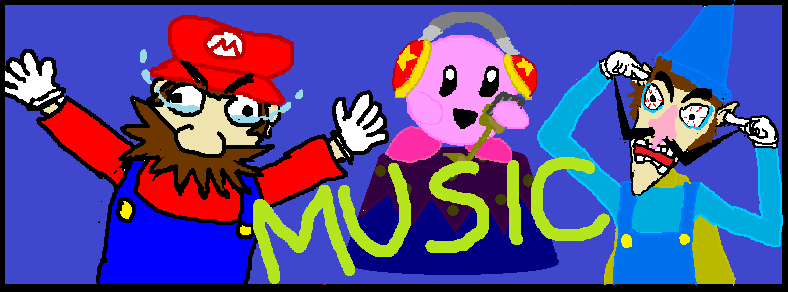
This is a personal peeve of mine. I enjoy listening to video-game music. A song in a video-game can definitely set the mood, or destroy it completely. Now this section is entirely up to your own personal opinion, but I am just going to point out the similarities between the New Super Mario Bros. series music choices and how the music in the Kirby series differs. I am not basing this on personal taste, just the selection of music that has been used in the games. Unfortunately, to avoid crashing people's computers or slowing down their internet, I have to just provide a link to the video game music I'm talking about rather than embedding them here. It's sloppy and tacky, I know, but it has to be done this way or else bad things will happen.
Here are the themes from the Desert worlds/World 2 of the four latest NSMB games:
- http://www.youtube.com/watch?v=81QYlX-ml8Q New Super Mario Bros.
- http://www.youtube.com/watch?v=_Jpc2ZOLXRM New Super Mario Bros. Wii
- http://www.youtube.com/watch?v=HLGVDQ0K1iE New Super Mario Bros. 2
- http://www.youtube.com/watch?v=tDkg-tzxdvM New Super Mario Bros. U
Notice how all the music sounds alike, and how the music from New Super Mario Bros. 2 and New Super Mario Bros. U are exactly like the New Super Mario Bros. Wii theme except with minor “changes”. Granted, NSMBU changed the Plains theme and the Snow Theme, but aside from that, NSMB2 and NSMBU have next to no original soundtracks. Now let’s listen to the Kirby versions of the desert theme.
- http://www.youtube.com/watch?v=4nMqSqvECFU Kirby’s Epic Yarn
- http://www.youtube.com/watch?v=1Ah99JUE7KI Kirby Mass Attack
- http://www.youtube.com/watch?v=kU7veQ6xFm8 Kirby’s Return to Dream Land
Notice how each of the three themes is not like the others, save for the typical desert-themed instruments used. Unfortunately, Kirby Super Star is not exactly split up into worlds like the other three Kirby games, and because of this, there is not exactly a desert theme. Unlike the Mario games where the desert levels only have one unique theme, the ones in the Kirby games have several unique themes, but I only provided a link to one from each, the generic desert theme to be exact, to avoid cluttering this page even more. If you are interested in hearing them, just look up a playlist or something.
Bosses
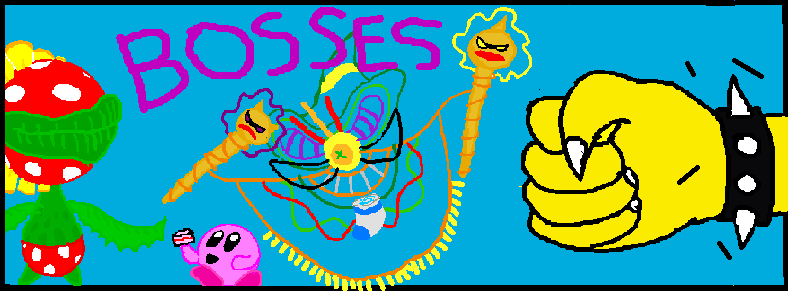
Bosses are one of the key elements in many games, be it strategy games, platformer games, action-adventure, and pretty much almost every video-game genre imaginable. The bosses can really make an impression on the game, especially the final boss. I'm not exactly sure what else to put here besides more cruft, so I'll just cut straight to the point and discuss the differences between the Kirby and Mario bosses. I'm not going to drone on about each boss in each of the games, save for the final boss, but might refer to a few of them for examples. Remember, when I mentioned spoilers? This is the section I had in mind when I mentioned that. Just click this to avoid this section entirely.
- New Super Mario Bros. definitely had the most original bosses in the series. It was a nice mix of some old and mostly new, with some twists thrown in. There were some old faces like Bowser, Bowser Jr, and Petey Piranha, but a good chunk of the bosses were actually original, such as the Mummipokey and Lakithunder. They still required the three stomps to defeat and the likes, but it was very good overall. Bowser and Bowser Jr. were the final bosses of this game, and the fight was a bit…underwhelming, especially with the overpowered power-up known as the Mega Mushroom. That item broke the game.
- New Super Mario Bros. Wii brought back the Koopalings after a long absence. This time, the 7 Koopalings served as the bosses of the first seven worlds while Bowser served as the final boss, as usual. The Koopalings each had their own gimmick and pattern, but overall they had the same pattern with the stomping or using the Fire Flower on them. I didn't mind the Koopalings' inclusion then. Bowser Jr. was also a boss three separate times, but there were only certain ways to hurt him in each fight. As mentioned, Bowser was the final boss, followed by Giant Bowser. Both had to be defeated by…running away and pressing a switch…
…Yeah…
- New Super Mario Bros. 2 featured the Koopalings once again, but this time their appearance wasn't so grand. Their attack pattern was literally the same as the ones in New Super Mario Bros. Wii, except with a few aesthetic changes here and minor attacks there. It was truly fathomable and it left a bad impression on me. The final boss was no better as it was just Giant Bowser again and a switch stomp was all that was needed to defeat him.
- Finally, New Super Mario Bros. U released two months later and can you guess who the bosses of that game were? That's right, the Koopalings were back for a third time in the series and by this point I was sick of them. They did have different attack styles, thankfully, but they still seemed so bland and boring. Stomp and dodge. Stomp and dodge. Stomp and win. That's it. It should be pretty obvious who the final boss in the game was, but it was definitely a much better fight because you actually fought him head on instead of running away.
Now, let's compare the Kirby series bosses:
- Kirby Super Star Ultra has a lot of bosses. A lot. To be fair, this is because rather than fighting a boss in each world, the player has to fight a boss at the end of each level. Unlike the New Super Mario Bros. games, the bosses in this game can be defeated using any means necessary, aside from jumping on them of course. Some of the bosses were recolored versions of previous bosses, yes, but the sheer amount of them overshadows that, in my opinion. Since Ultra was split off into several smaller games, there were several “final bosses”, although most people consider Marx and Marx Soul the true final bosses, which I can agree with.
- Kirby's Epic Yarn introduced new bosses into the series. Unlike the previous Kirby games where the player just uses Hammer or any other stronger weapon and just beat the shit out of the bosses, the bosses in this game required more “strategy”, in a sense as their weak points needed to be revealed first, which usually required stunning the bosses. The final boss, Yin-Yarn, was split off into two separate fights. The first fight consisted of the normal boss techniques of stunning him, and then throwing his entire body across the room. The second part had Kirby (and Prince Fluff) transform into a Tankbot and just wail on him in an all-out brawl.
- Kirby Mass Attack, as I previously mentioned, also had a different gameplay element. There were only five bosses in this game, which is the small compared to the other games. However, Mass Attack had a slew of mini-bosses, and I don't mean jokes like Poppy Bros or Mr. Frosty, I mean mini bosses that can practically be considered a boss in a similar fashion to the bosses at the end of levels in Super Star/Ultra. Once again, the bosses and mini bosses in this game are more strategy oriented as they could only be hurt and defeated when certain conditions have been met rather than wailing on them with an ability. The final boss was Necrodeus, who was separated into two different phases as well. His first form had his hands as weak point where the Kirby's had to break them. Once they were destroyed, the Kirbies had to attack Necrodeus's weak point, which was the orange eyeball inside of his mouth.
- Finally, we come to Kirby's Return to Dream Land. There are seven worlds, therefore there are seven bosses. There are a variety of mini-bosses fought throughout the game, and these are essentially stronger versions of normal enemies. The game is a callback to Kirby's roots, therefore it follows the notion of wailing on the boss with any ability you desire. The final boss of the game, if it wasn't obvious, is Magolor, who uses the Master Crown to transform into a powerful sorcerer. The final fight is split off into three phases. The first phase consists of fighting Magolor and his shop, the Lor, while riding Landia. The fight is a callback to the Starship fights in Kirby's Epic Yarn, and those that were originally in Kirby Super Star/Ultra. The second phase is the actual fight with the powered-up Magolor. After beating him up with one of the Super Abilities, you fight his final form, which is speculated to be the manifestation of the Master Crown itself and just using Magolor's lifeless body as a host. He's defeated the same way the previous bosses were: beating him up with whatever you've got.
Now I know that people are going to try to counter my point on the Kirby series by trying to point out bosses like Whispy, King Dedede, and Meta Knight have been bosses in most Kirby games to date. Whispy is more or less a tradition in a Kirby as usually the first boss you fight. He's been in every game as a boss besides Amazing Mirror, but then again a clone of him served as the boss. I don't mind it if there was a certain boss in all or most Mario games. Bowser is like, although unfortunately he's the final boss most of the time. Meta Knight was only a boss in two of the games I mentioned, extras and minigames non-withstanding. King Dedede was in three of the ones mentioned, and I guess you can make a point by saying he's “overused”. Then again, Dedede is Kirby's Bowser, but much better as he actually isn't the final boss of any of the games mentioned. Heck, if I'm correct (which I'm most likely not) Dedede hasn't been a final boss in a Kirby game since the original in 1991. Once again, this is excluding cases like Super Star Ultra's several mini games and extras and missions, which will be covered down the line. And just for comparison's sake, let's look at the final bosses.
I think it should be clear who wins in the boss category at this point.
Multiplayer
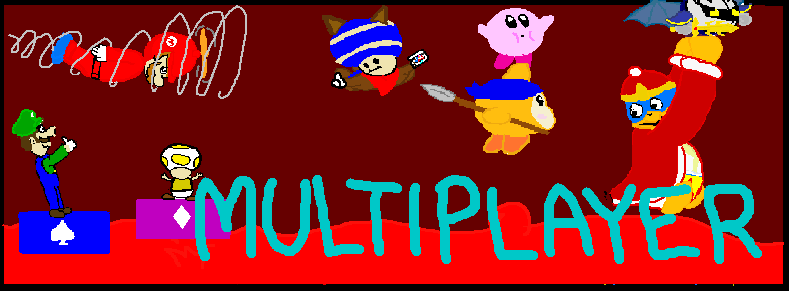
Multiplayer has become a big selling point, and because of this, the most recent iteration of the Kirby series and most of the new New Super Mario Bros. series has it. Even though it's meant to be co-op most of the time, it will likely turn into a chaotic mess if you have friends or siblings like mine. I don't think I really need to drone on this point for too long, so I'll just explain it.
- New Super Mario Bros. multiplayer was pretty shallow compared to the three that followed. You could either play mini-games with up to three other people or chase after stars in five different levels in the Mario vs. Luigi mode. Both of these modes can be fun, but it isn't as entertaining as future installments.
- New Super Mario Bros. Wii introduced a robust multiplayer mode into the series. The first player is always Mario, unfortunately, but the second, third, and fourth players can choose between Luigi, Yellow Toad, or a Blue Toad. Each character fortunately has the same abilities and can get the same power-ups as Mario. However, you are prone into bumping into each other and you can also pick up the other players. This multiplayer can become messy pretty quickly, but it's stupidly fun. Even if Mario dies, the other players can still continue playing, something that Kirby's Return to Dream Land could have used.
- New Super Mario Bros. 2 featured a similar multiplayer to the Wii version, except it can only be done between two players rather than four. The second player was Luigi and they could have the same abilities as Mario.
- New Super Mario Bros. U featured the exact same multiplayer as the Wii version, although this is one time that copying the previous installments paid off. In addition to the four players, another person can play on the Gamepad in Boost Mode to either help, or if they're a dick, hinder the other players by placing blocks.
Now the Kirby series:
- Kirby Super Star Ultra's multiplayer was about as shallow it could get. The only multiplayer aspect was the ability to play as Kirby's helper in only one mode: Spring Breeze instead of being able to play in the other modes like the previous. You could also play one of the three mini-games with three other people, but other than that, there was no multiplayer.
- Kirby's Epic Yarn featured a much better multiplayer system. Another player could play as Prince Fluff, whom had all of Kirby's abilities as well. The main difference between single player and multiplayer were the Metamortex transformations, which had different effects depending on the amount of players. For example, Kirby by himself as a Tankbot could only shoot missiles, but with Prince Fluff, the Tankbot is able to unleash a circling flurry of punches as well.
- Kirby Mass Attack had no multiplayer, so…
- Kirby's Return to Dream Land finally got the multiplayer right, although with one flaw, which I'll explain shortly. Just like NSMBW and U, the first player is always Kirby, as he is needed in order to progress through the game because of certain barriers that need to be broken with the Super Ability. The other four players can choose between Dedede, Meta Knight, Waddle Dee, or another Kirby. Dedede is more powerful than the others, but can only use the hammer ability. Meta Knight is faster and flies faster than the others and his wings can cut ropes. He has the Sword ability. Waddle Dee wields a Spear and uses it much faster than Spear Kirby and can also jump higher than the others. The major flaw with the multiplayer is if the first player dies, the others automatically die as well. If another player dies, they can spawn back with full health if there are lives available or half life if there are no lives left. Aside from the main game, the Arena, True Arena, and mini-games like Scope Shot and Ninja Dojo are multiplayer as well.
I think it's pretty obvious that the Mario games have the more robust multiplayer, but the Kirby series is not too far behind when trying to create an ideal multiplayer for the series though it definitely needs some tuning.
Extras
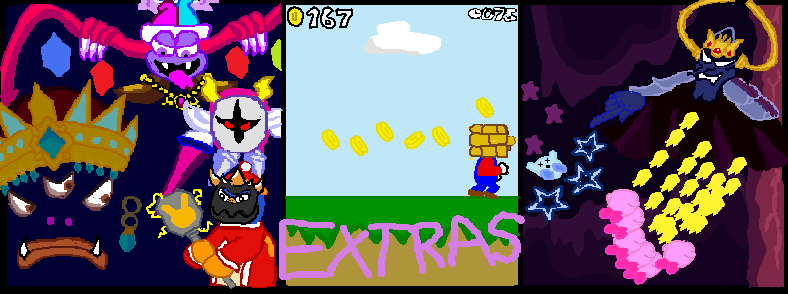
For this analysis, extras will basically be things that are not required to beat the main game. These include mini-games, extra worlds/levels, and stuff like that. Multiplayer does not count as an extra for this.
- New Super Mario Bros. didn't have many extras. It only had a few mini-games, a lot of which can only be accessed by playing multiplayer. Aside from that, there was nothing.
- New Super Mario Bros. Wii introduced World-9 which can be accessed after beating the game. It had eight challenging levels that only be accessed after all the Star Coins in a previous world had been collected.
- New Super Mario Bros. 2 introduced DLC into the series. There were a total of 10 different DLC packs of ranging difficulty that could be purchased for a set price.
- New Super Mario Bros U. had the best extras in the series by far. Not only did it have a new world that appeared after beating the game like NSMBW did, you didn't have to collect all the Star Coins in the levels to play them. They were very hard levels indeed. Aside from that, NSMBU also came pack with many challenges that ranged from the pitifully easy to the almost impossible to get gold challenges. These challenges definitely provided a lot of replayability.
Kirby series:
- After beating the main game and the Arena, Kirby Super Star Ultra introduced three new mini games: Revenge of the King, Helper to Hero, and Meta Knightmare Ultra. In Revenge of the King, Kirby had to go through a harder version of Spring Breeze with different enemies and powered-up bosses. At the end, he fought a powered-up King Dedede. In Helper to Hero, the player played as one of the sixteen helpers and had to defeat several bosses. At the end, Wham Bam Jewel was fought. Meta Knightmare Ultra had the player play as Meta Knight and they had to play through the entirety of the past four games (Spring Breeze, Dyna Blade, Great Cave Offensive, and Milky Way Wishes) as Meta Knight. Instead of fighting Marx, Meta Knight fought Galacta Knight. After these three modes were beaten, the True Arena is unlocked and Kirby has to fight the new bosses introduced in the three mini games before as well as fighting the true final boss: Marx Soul. There was also a movie player to watch previous scenes in the game and a music player as well, a common staple of the series.
- Kirby's Epic Yarn had challenges that were given by the apartment tenants. There were a total of five different types of challenges, each with their own difficulty and amount of levels. Zeke hosted a hide-and-seek mini-games, Beadrix had a bead collecting mini-game, Carrie had an escort mini-game, Buster had a mini-game where all enemies had to be killed, and Mara had a racing mini-game. Aside from these challenges, throughout the level and in the shops, Kirby could buy furniture and wallpaper to decorate his apartment room. CDs can be found throughout the levels of the game and can be listened to at any time in Quilty Square. Enemy bios, furniture descriptions, wallpaper descriptions, and medal collections can be viewed at Quilty Square as well.
- What Kirby Mass Attack lacked in multiplayer, it made up for with a slew of extras. Hidden in each level were three or five medals. Collecting these medals unlocked extra content that can be accessed from the main menu or from inside the game. This content varied from short mini-games that usually take about a minute to complete to longer, extensive mini-games that take a considerable amount of time to complete. I think the best part about the mini-games is not only are they homages to previous Kirby games, but the mini-games also acknowledges the existence of the anime as well. Certain games like Field Frenzy, which is a whack-a-mole game, Dash Course, which is based off Kirby 64’s mini-game 100-yard Hop, and Curtain Call are all short mini-games, but the rest are quite packed with content. Strato Patrol EOS is a shoot em up based off of Kirby's Adventure and Kirby's Nightmare in Dream Land. Kirby Brawlball is a homage to Kirby's Pinball Land and Kirby Super Star. Finally, my personal favorite, Kirby Quest, is a role-playing game that takes elements from different Kirby games and combines them, although the final boss is Dark Matter from Kirby's Dream Land 2. Thrown in the mix of this mini-game are recognizable anime characters such as Max Flexer and Chef Shiitake and one of the bosses is even the scrapped boss from the old Kirby GCN (although it later appeared as an actual boss in Return to Dream Land). Aside from the mini-games, there is a boss rush mode after all medals are collected and a music player as well.
- Kirby's Return to Dream Land also included quite a bit of extensive content as well. Throughout the game, the player can unlock seven different challenges inside of the Lor Starcutter to complete. These challenges require perfect timing, precision, obtaining ever coin, and killing all the enemies without getting hitting in order to get the best score possible. Ninja Dojo and Scope Shot, which are not multi-player exclusive, are also unlocked and can be played from inside the Lor or the main screen. After beating the main game, the Arena and Extra Game are unlocked. The Extra Game is the same as the main game, except the player only has half their health, the enemies vary in sizes, and the bosses are recolored and have different, more powerful attacks. There are also two new bosses included. These bosses are Hr-D3 whom is fought after Metal General is defeated and Magolor Soul, which is the incarnation of the Master Crown taking over Magolor's lifeless body as its host. After completing the main game, the True Arena is unlocked as well. A music player can also be unlocked by completing the main game, and more songs are added to it once the Extra Game is 100% complete as well.
Remember, this was just my personal opinion. If you somehow managed to read this in one sitting, you need to check your priorities. But seriously, if you read the whole thing, thank you. If there are any questions you have with this or you want to critique this mess, then please do so in the forum topic for the Special Issue. Thanks.
| Issue LXXV | |
|---|---|
| Previous Section | |

 Warning – This article is a long read (not really). The author suggests to drink a pot of coffee and eat a large meal before attempting to read this article in one go.
Warning – This article is a long read (not really). The author suggests to drink a pot of coffee and eat a large meal before attempting to read this article in one go. 








